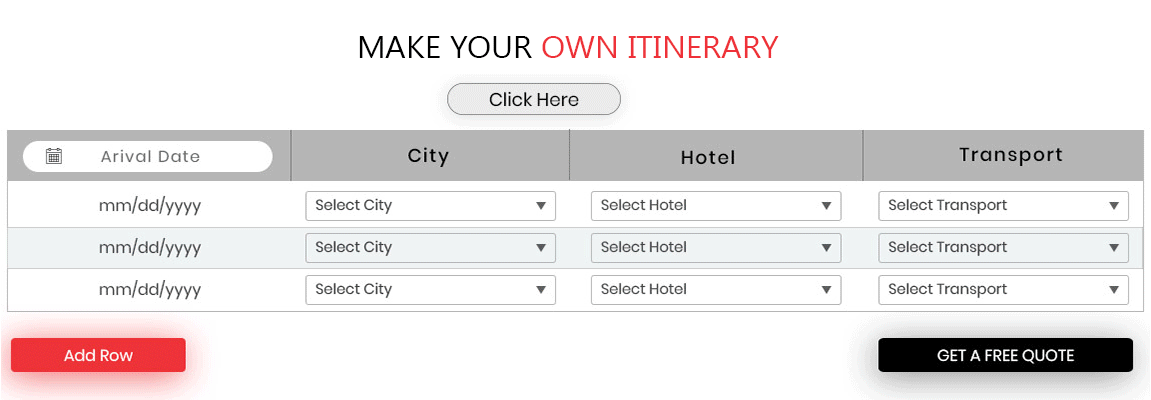Jagannath rath yatra

One of the most sought-after festivals of India is Jagannath Rath Yatra celebrated in the eastern state of Orissa. This festival is held on an annual basis to worship Lord Jagannath, his younger sister Goddess Subhadra and his elder brother Lord Balabhadra. This most-celebrated festival of the country is known by many names such as Gundicha Yatra, Dasavatara, Chariot Festival, Navadina Yatra, Car Festival, etc. Tourists from all over the world throng the holy city of Puri during this festival. This festival is known to be one of the oldest and also the grandest procession festival, celebrated every year in India. It also finds its mention in Puranas of Hinduism such as Padma Puran, Brahma Puran and Skanda Puran.
Why is it celebrated?
When and Where is it celebrated?
How is it celebrated?
- The celebration of the festival starts many days prior to the main event and includes making and decoration of the idols and chariots by numerous devotees and volunteers. Since the idols are made up of wood, they are subject to decay and therefore, need to be replaced from time to time. New idols are carved every year from neem wood and the process of carving takes place in a special enclosure inside the temple, known as Koili Baikuntha.
- All three deities travel in three different chariots during the festival. Ornate chariots are constructed for the deities every year from wood. The preparation of the chariots starts on the auspicious day of Akshaya Tritiya. Century-old styles are followed for building and decorating the chariots, which resemble the temples. Lord Jagannath’s chariot is 45.6 feet high and has 18 wheels. The chariot of Lord Balabhadra comes with 16 wheels and 45 feet of height. Likewise, Goddess Subhadra’s chariot is 44.6 feet high and owns 14 wheels. These chariots are called Nandighosa, Taladhwaja and Devadalana respectively.
- The creation of new idols and destruction of the old idols symbolizes reincarnation. The wooden idols of the three deities are transported in the decorative chariots from the Jagannath Temple to Gundicha Temple. Chants and conches can be heard during this event. Then the idols are given a bath with 108 buckets of water, which is termed as Snana Purnima. Afterwards, the idols are kept in isolation as it is believed that they are unwell. This event is known by the name of Ansara.
- Then comes the day of Yatra when these idols are brought from the temple by the King to the chariots. This holy ritual is known by the name of Chhera Pahara. Then the chariots are pulled by thousands of devotees by ropes, which are 50 meters in length. It is believed to be an add-on to the Karma. The two temples are located at a mere distance of 3 km but the enthusiasm of the devotees combined with drum beating and chants makes it a procession of a couple of hours. Devotees can seek blessings of the Gods and Goddess during the next 9 days.
- After 9 days of rest at the Gundicha Temple, the Lord returns to his home, stopping on the way at the Mausi Maa Temple. It is believed that Lord Jagannath is very fond of a sweet pancake and he cannot be back to his home without having it. Poda Pitha is a special kind of pancake and is quite popular in Odisha. The return journey is referred to as the Bahuda Yatra.
- The day of the Rath Yatra in Puri is the only day when all devotees, irrespective of their religion are allowed to see the Gods and Goddess of the Jagannath temple. On reaching the Jagannath Temple in the evening, the idols are made to wait outside. On the next day, the idols are adorned with new clothes as babies. This event is called Suna Vesa. After this day, the deities are placed again into the sanctum sanctorum, marking an end to the Rath Yatra of Jagannath Puri.
What are the nearby places to explore in Puri?
- Puri Beach is an ideal spot to spend holidays. Here, you can relax in the white sands.
- The largest food market in the world is present in Puri. So, you can walk down the streets of Ananda Bazar.
- One can have a picnic with friends and family at Balighai Beach, inhabited by elegant casuarina trees.
- Have a break from the monotonous life at Chilika Lake, Asia’s largest brackish water lake.
- Shop for local handicrafts by visiting the small village of Pipli, which is famous for the ornamented work of the traditional Orissa style.
HOW TO REACH PURI?
- By Air: The nearest airport to Puri is Biju Patnaik Airport, Bhubaneswar, located at a distance of 60 km from the city.
- By Train: Puri is a major railway junction and is well-connected to all the major cities in the country.
- By Road: Buses are available from Visakhapatnam, Kolkata, and Bhubaneswar.
